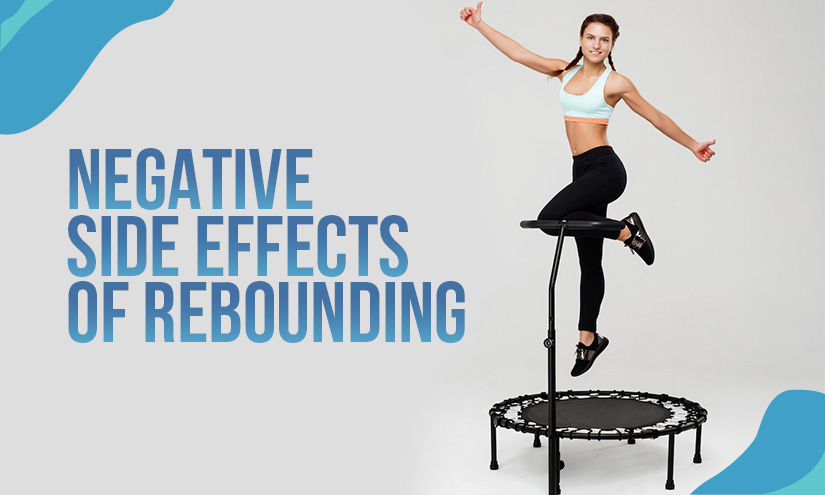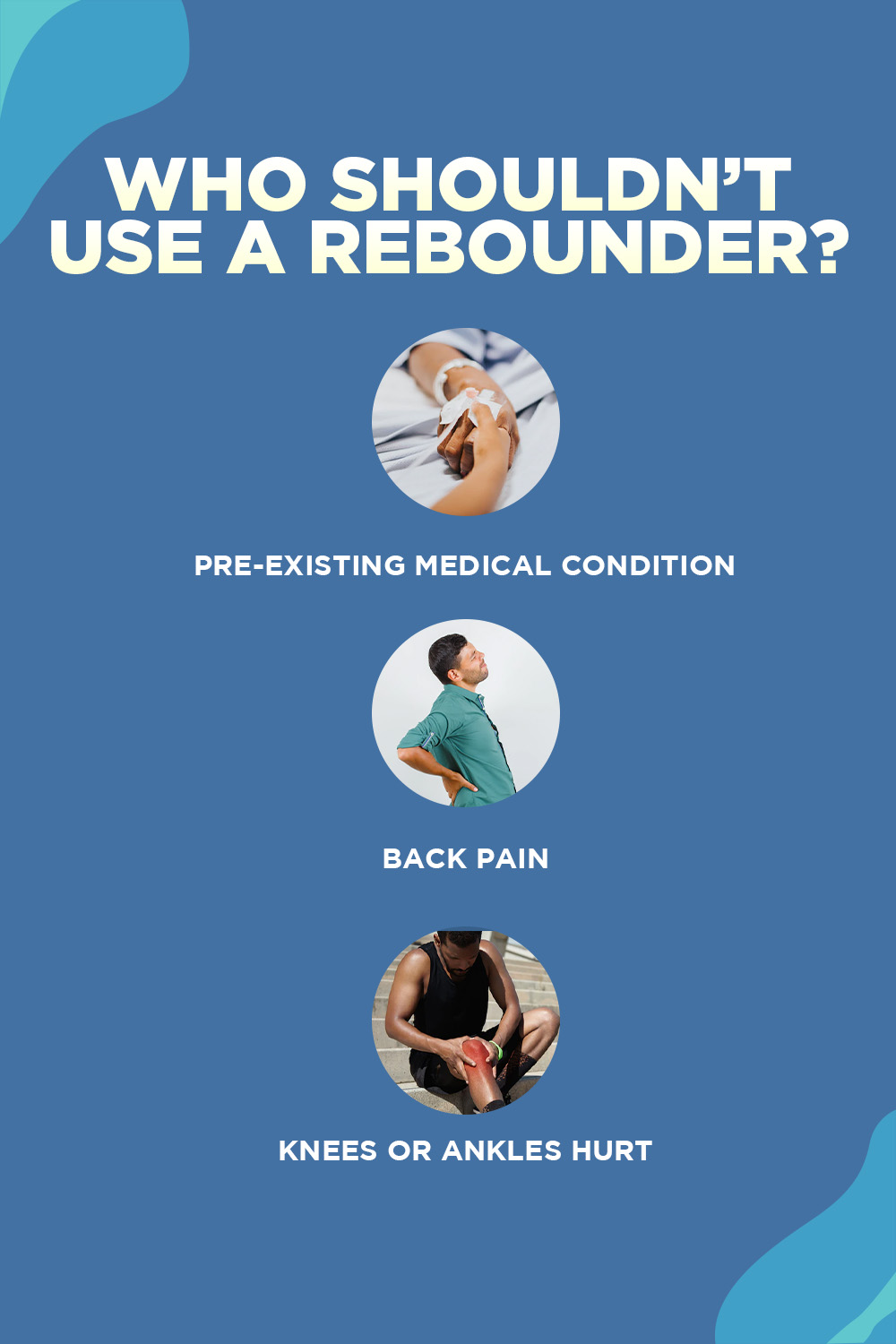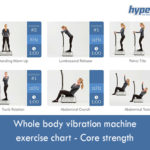
Both rebounding and jumping on a trampoline are excellent ways to release tension while also getting some exercise. People who have physical limitations may find that it is an effective kind of rehabilitation for them to participate in.
The fact that it is humorous, enjoyable, and a welcome distraction from the pressures of everyday life makes it appealing to a large number of individuals. However, rebounding can have certain unintended and potentially detrimental consequences.
It has been demonstrated that engaging in activities such as rebounding or jumping on a trampoline can have certain undesirable effects. According to the findings of one study, there was a greater likelihood of injury when adults over the age of 60 bounced on a rebounder.
If you are above the age of 50 and suffer from any pre-existing medical conditions, like a bad back, joint difficulties, or poor circulation, you should not use a rebounder. Before using a rebounder, you should discuss your medical history with a practitioner, particularly if you have a history of heart difficulties or other health issues.

You should not use a rebounder if any of the following apply to you:
If you are unsure whether or not a piece of exercise equipment is appropriate for your use, it is best to get the opinion of a qualified medical professional before using the item in question.
Even while rebounders absorb force as you land on them, the pressure may still be too much for your joints to handle if they are not as strong as they may be. If your doctor has given you the go-ahead to utilize a rebounder, I suggest securing this around your ankle in order to give it some more support.
It has been established that rebounding, as a kind of exercise, has a multitude of advantages. It helps persons who suffer from mental health concerns, boosts cardiovascular health, and increases the tone of their muscles, all of which are health benefits.
Rebounding poses a significant risk of injury to the pelvic floor, which is one of the primary concerns regarding this activity.
According to the findings of a study that was published by the National Health Service, people tend to bounce more when they hit middle age, which can place additional strain on their pelvic floor and lead to pelvic floor dysfunction.
Both athletes and people who are not involved in sports are always looking for new exercise routines that can assist them in reaching their weight loss, fitness, and wellness objectives. The fact that there are other forms of aerobic exercise outside the standard ones like running and swimming is something that a lot of people are unaware of.
When someone bounces on a trampoline, they are also getting several benefits for the pelvic floor, which is a good thing. This region is helped to become stronger by the upward force of gravity, which, in the long term, can lead to improvements in health. In addition, the quick motion of the body contributes to the creation of muscular contractions inside the pelvic region.
Pelvic floor massage can be very helpful in relieving strains and spasms in specific muscles, such as those in the groin, buttocks, or back. It can also help to lengthen all of the other muscles around the pelvis, which can assist your body in adjusting to the growing weight of your baby as it is distributed through your pelvis.
Jumping on a mini-trampoline, or “rebounding,” is a fun way to work out. Jumping on the trampoline to lose weight or alleviate stress may sound like a good idea, but new research suggests that bouncing for 30 minutes might potentially harm your bladder.
Because it puts undue stress on the muscles of the pelvic floor, rebounding is unhealthy for your bladder. Like a diaper, the pelvic floor muscles are essential for keeping waste inside of you.
Fractures in the spine are the most prevalent cause of nerve injury, although there are many other causes. Nerve injury can also be caused by scoliosis and other back issues. Damage to the nerves can result from long periods of jumping on a rebounder, according to new research.
Rebounders have been proven to strengthen injured nerves and aid in the regeneration of neurons, according to one study.
Nerve injury can be caused by a variety of sports injuries. People who get hit in the head, fingers and spinal cord can all suffer from nerve damage that causes pain, tingling and other unpleasant sensations. Strengthening the muscles around the injured nerves is the most common method of resolving this issue.
An initial study conducted by the University of Michigan Health System discovered that working on a rebounder is safe for individuals who suffer from back discomfort. The researchers examined 128 persons who experienced low-back discomfort but had never been told they had a serious diagnosis such as cancer, bone loss, infection, or a ruptured disk. The participants in the study all had a history of having low-back pain.
Recent years have seen a rise in the number of individuals who assert that jumping rope, trampolines, and other forms of rebound exercise are detrimental to one’s back. It is essential that you are aware of the fact that jogging can be just as harmful to your back as running.
When you get home at the end of a long day, it’s easy to succumb to the need to let out your anger on whatever surface is closest to you. On the other hand, it is essential that you are aware that some activities might not be as gentle on your body as you might expect them to be.
Although jumping on a trampoline or rebounding may look like a fun exercise, it may actually be doing more harm than good for your back. Rebounding and jumping on a trampoline are both examples of activities that fall into this category.
Jumping on a trampoline can be an enjoyable and stress-relieving way to spend time in the fresh air.
In the event you have ever sprained an ankle before, you may like to learn about the repercussions of jumping on a trampoline while your ankle is already hurt. The ligaments in the ankle might be stretched and moved around when you jump on a trampoline, making it harder for them to heal properly.
Trampolining may look like a harmless pastime, but it might potentially put your ankles at risk. Ankle sprains, fractures, and ligament tears are all possible side effects of jumping on a trampoline with a lot of spring. The most common cause of these injuries is landing on one’s heel or leaping with excessive force.
Every year, over 200,000 people visit emergency rooms due to trampoline-related injuries, with ankle sprains accounting for more than half of those visits.
Trampolining and rebounding have seen an increase in popularity in recent years. Jumping on a trampoline is a terrific way to get a good workout without having to invest in expensive gym equipment. Concerns have been raised about the possible harmful consequences on persons with scoliosis as a result of these.
Rebounding or trampoline use in young children has recently become the focus of medical research. When using a rebounder, parents should be aware of the risks to their children’s safety. Rebounding for long periods of time can cause the spine to curve, which can lead to scoliosis in children.
Sources:
https://www.cardiocapital.com/rebounders/who-should-not-use-a-rebounder/#:~:text=You%20should%20not%20use%20a,practitioner%20before%20using%20a%20rebounder.
https://trampolinepoint.com/negative-side-effects-of-rebounding/
https://www.kenningtonosteopaths.co.uk/massage-for-pelvic-girdle-pain/

Updated on: 08.09.2021 The lymphatic system is involved not only...

Stress can make you gain weight – we’ve heard this...

Various theories exist to answer this question. As you will...

Our series of whole body vibration machine exercise articles continues...

Both rebounding and jumping on a trampoline are excellent ways...